
Concept explainers
Polar amino acids can be classified as acidic, basic, or neutral.
- a. Draw an example of a possible amino acid for each of the three types of polar amino acid.
- b. For each example, determine if the side chain can make hydrogen bonds, ionic bonds, or both.
- c. Describe each category in more detail. What
functional groups would you expect in the side chains?
(a)
Interpretation: The examples for each of the three types of polar amino acid have to be drawn.
Concept Introduction:
Amino acids:
Amino acids are the basic functional units of proteins. Amino acids form peptide bonds between them and the large numbers of peptides form the protein. So, amino acids are the basic monomeric units of the proteins which are biopolymers.
General structure of an amino acid can be drawn as shown here:
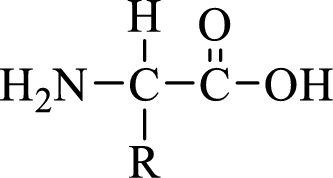
In amino acids, there are two major functional groups such as amine and carboxylic acid functional groups along with a side chain
Explanation of Solution
Polar amino acids are those which have polarity in there
There are three types of polar amino acids such as acidic, basic and neutral amino acids.
An example for the acidic amino acid is glutamic acid and its structure is drawn here:
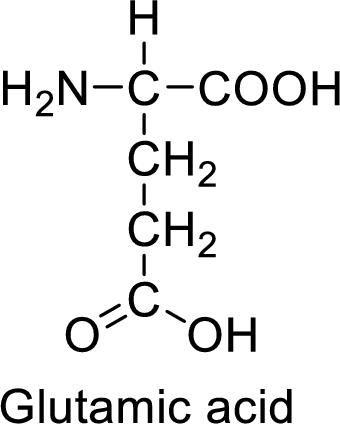
The side of glutamic acid has a carboxylic acid functional group which is a polar
An example for the basic amino acid is lysine and its structure is drawn here:
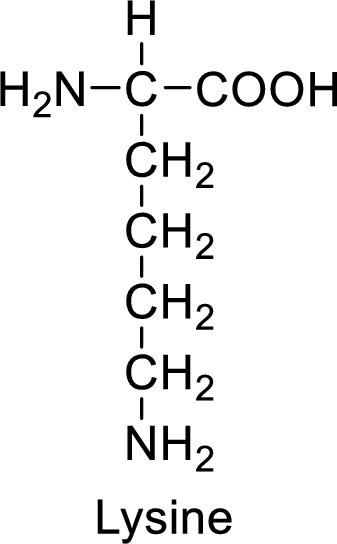
The side of lysine has an amine functional group which is a polar
An example for the neutral amino acid is serine and its structure is drawn here:
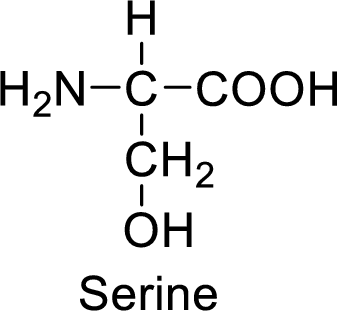
The side of serine has a hydroxyl functional group which is a polar
(b)
Interpretation: For each example in the subpart (a), determine whether the side chain can make hydrogen bonds, ionic bonds or both.
Concept Introduction:
Amino acids:
Amino acids are the basic functional units of proteins. Amino acids form peptide bonds between them and the large numbers of peptides form the protein. So, amino acids are the basic monomeric units of the proteins which are biopolymers.
General structure of an amino acid can be drawn as shown here:
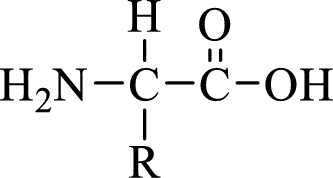
In amino acids, there are two major functional groups such as amine and carboxylic acid functional groups along with a side chain
Hydrogen bonding:
- • Hydrogen bonding is a special type of dipole-dipole interaction in a polar bond which has hydrogen atom and a highly electronegative atom such as Nitrogen, Oxygen and Fluorine.
- • Hydrogen bonding can also be defined as coulombic attraction between the hydrogen atom and an electronegative atom.
Ionic bonds are formed by complete transfer of one or more electrons to the other atom, thereby the bonded atoms acquire opposite charges to each other, so the ionic bond is formed due to the electrostatically attraction between these opposite charged atoms.
Explanation of Solution
An example for the acidic amino acid is glutamic acid and its structure is drawn here:
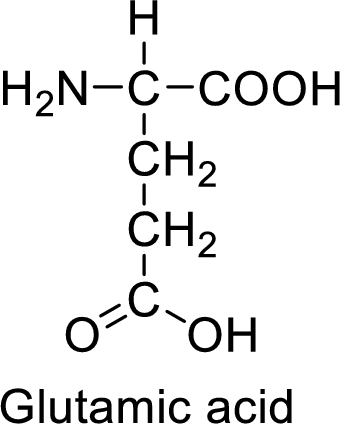
The side chain in the glutamic acid has carboxylic acid functional group which can make hydrogen bonding. The acidic amino acids like glutamic acid also form ionic bonds due to the polarity in the structure.
An example for the basic amino acid is lysine and its structure is drawn here:
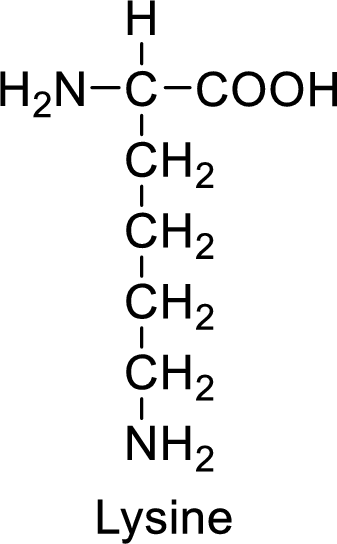
The side chain in the lysine has amine functional group which can make hydrogen bonding. The basic amino acids like lysine also form ionic bonds due to the polarity in the structure.
An example for the polar neutral amino acid is serine and its structure is drawn here:
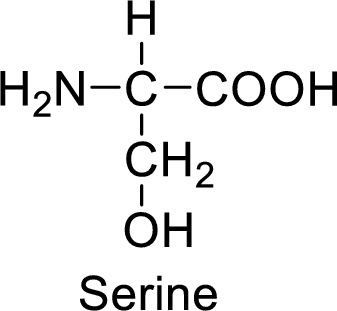
The side chain in the serine has hydroxyl functional group which can make hydrogen bonding. The neutral amino acids like serine do not form ionic bonds due to the lack of polarity in the structure.
(c)
Interpretation:
- • Each of the categories of amino acids has to be described in more detail.
- • The expected functional groups in the side chains have to be found.
Concept Introduction:
Amino acids:
Amino acids are the basic functional units of proteins. Amino acids form peptide bonds between them and the large numbers of peptides form the protein. So, amino acids are the basic monomeric units of the proteins which are biopolymers.
General structure of an amino acid can be drawn as shown here:
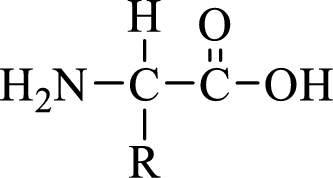
In amino acids, there are two major functional groups such as amine and carboxylic acid functional groups along with a side chain
Explanation of Solution
Polar amino acids are those which have polarity in their
All polar amino acids have the same general structure with the only difference in the
There are three types of polar amino acids such as acidic, basic and neutral amino acids.
Acidic amino acids:
Acidic amino acids have acidic functional groups such as carboxylic acids in the
An example for the acidic amino acid is glutamic acid and its structure is drawn here:
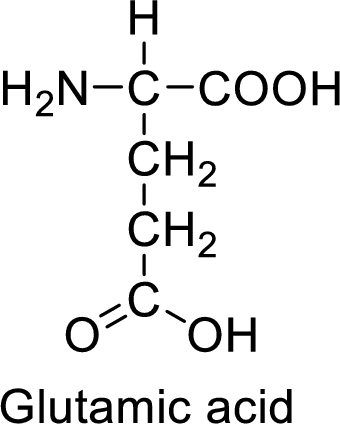
The side of glutamic acid has a carboxylic acid functional group which is a polar
Basic amino acids:
Basic amino acids have basic functional groups such as amine in the
An example for the basic amino acid is lysine and its structure is drawn here:
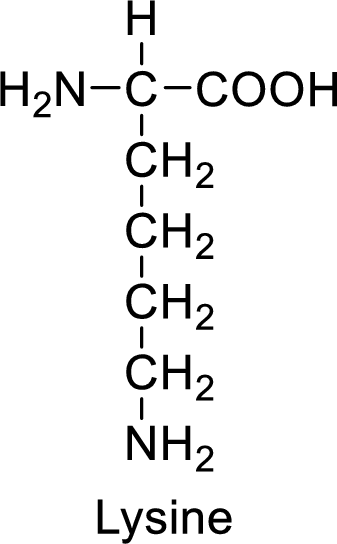
The side of lysine has an amine functional group which is a polar
Neutral amino acids:
Neutral amino acids have neutral functional groups such as amide and hydroxyl groups in the
An example for the neutral amino acid is serine and its structure is drawn here:
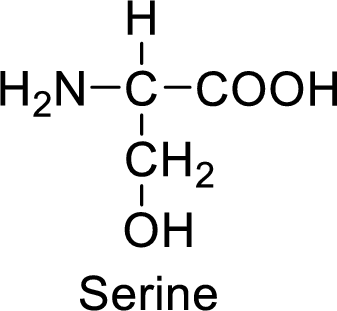
The side of serine has a hydroxyl functional group which is a polar
Want to see more full solutions like this?
Chapter 13 Solutions
Chemistry In Context
- Using reaction free energy to predict equilibrium composition Consider the following equilibrium: 2NOCI (g) 2NO (g) + Cl2 (g) AGº =41. kJ Now suppose a reaction vessel is filled with 4.50 atm of nitrosyl chloride (NOCI) and 6.38 atm of chlorine (C12) at 212. °C. Answer the following questions about this system: ? rise Under these conditions, will the pressure of NOCI tend to rise or fall? x10 fall Is it possible to reverse this tendency by adding NO? In other words, if you said the pressure of NOCI will tend to rise, can that be changed to a tendency to fall by adding NO? Similarly, if you said the pressure of NOCI will tend to fall, can that be changed to a tendency to rise by adding NO? yes no If you said the tendency can be reversed in the second question, calculate the minimum pressure of NO needed to reverse it. Round your answer to 2 significant digits. 0.035 atm ✓ G 00. 18 Ararrow_forwardHighlight each glycosidic bond in the molecule below. Then answer the questions in the table under the drawing area. HO- HO- -0 OH OH HO NG HO- HO- OH OH OH OH NG OHarrow_forward€ + Suppose the molecule in the drawing area below were reacted with H₂ over a platinum catalyst. Edit the molecule to show what would happen to it. That is, turn it into the product of the reaction. Also, write the name of the product molecule under the drawing area. Name: ☐ H C=0 X H- OH HO- H HO- -H CH₂OH ×arrow_forward
- Draw the Haworth projection of the disaccharide made by joining D-glucose and D-mannose with a ẞ(1-4) glycosidic bond. If the disaccharide has more than one anomer, you can draw any of them. Click and drag to start drawing a structure. Xarrow_forwardEpoxides can be opened in aqueous acid or aqueous base to produce diols (molecules with two OH groups). In this question, you'll explore the mechanism of epoxide opening in aqueous acid. 2nd attempt Be sure to show all four bonds at stereocenters using hash and wedge lines. 0 0 Draw curved arrows to show how the epoxide reacts with hydronium ion. 100 +1: 1st attempt Feedback Be sure to show all four bonds at stereocenters using hash and wedge lines. See Periodic Table See Hint H A 5 F F Hr See Periodic Table See Hintarrow_forward03 Question (1 point) For the reaction below, draw both of the major organic products. Be sure to consider stereochemistry. > 1. CH₂CH₂MgBr 2. H₂O 3rd attempt Draw all four bonds at chiral centers. Draw all stereoisomers formed. Draw the structures here. e 130 AN H See Periodic Table See Hint P C Brarrow_forward
- You may wish to address the following issues in your response if they are pertinent to the reaction(s) you propose to employ:1) Chemoselectivity (why this functional group and not another?) 2) Regioselectivity (why here and not there?) 3) Stereoselectivity (why this stereoisomer?) 4) Changes in oxidation state. Please make it in detail and draw it out too in what step what happens. Thank you for helping me!arrow_forward1) Chemoselectivity (why this functional group and not another?) 2) Regioselectivity (why here and not there?) 3) Stereoselectivity (why this stereoisomer?) 4) Changes in oxidation state. Everything in detail and draw out and write it.arrow_forwardCalculating the pH at equivalence of a titration 3/5 Izabella A chemist titrates 120.0 mL of a 0.7191M dimethylamine ((CH3)2NH) solution with 0.5501 M HBr solution at 25 °C. Calculate the pH at equivalence. The pk of dimethylamine is 3.27. Round your answer to 2 decimal places. Note for advanced students: you may assume the total volume of the solution equals the initial volume plus the volume of HBr solution added. pH = ☐ ✓ 18 Ar Boarrow_forward
- Alcohols can be synthesized using an acid-catalyzed hydration of an alkene. An alkene is combined with aqueous acid (e.. sulfuric acid in water). The reaction mechanism typically involves a carbocation intermediate. > 3rd attempt 3343 10 8 Draw arrows to show the reaction between the alkene and hydronium ion. that 2nd attempt Feedback 1st attempt تعمال Ju See Periodic Table See Hint F D Ju See Periodic Table See Hintarrow_forwardDraw the simplified curved arrow mechanism for the reaction of acetone and CHgLi to give the major product. 4th attempt Π Draw the simplified curved arrow mechanism T 3rd attempt Feedback Ju See Periodic Table See Hint H -H H -I H F See Periodic Table See Hintarrow_forwardSelect the correct reagent to accomplish the first step of this reaction. Then draw a mechanism on the Grignard reagent using curved arrow notation to show how it is converted to the final product. 4th attempt Part 1 (0.5 point) Select the correct reagent to accomplish the first step of this reaction. Choose one: OA Mg in ethanol (EtOH) OB. 2 Li in THF O C. Li in THF D. Mg in THF O E Mg in H2O Part 2 (0.5 point) Br Part 1 Bri Mg CH B CH, 1 Draw intermediate here, but no arrows. © TE See Periodic Table See Hint See Hint ין Harrow_forward
 ChemistryChemistryISBN:9781305957404Author:Steven S. Zumdahl, Susan A. Zumdahl, Donald J. DeCostePublisher:Cengage Learning
ChemistryChemistryISBN:9781305957404Author:Steven S. Zumdahl, Susan A. Zumdahl, Donald J. DeCostePublisher:Cengage Learning Chemistry: An Atoms First ApproachChemistryISBN:9781305079243Author:Steven S. Zumdahl, Susan A. ZumdahlPublisher:Cengage Learning
Chemistry: An Atoms First ApproachChemistryISBN:9781305079243Author:Steven S. Zumdahl, Susan A. ZumdahlPublisher:Cengage Learning
 Introductory Chemistry: A FoundationChemistryISBN:9781337399425Author:Steven S. Zumdahl, Donald J. DeCostePublisher:Cengage Learning
Introductory Chemistry: A FoundationChemistryISBN:9781337399425Author:Steven S. Zumdahl, Donald J. DeCostePublisher:Cengage Learning World of Chemistry, 3rd editionChemistryISBN:9781133109655Author:Steven S. Zumdahl, Susan L. Zumdahl, Donald J. DeCostePublisher:Brooks / Cole / Cengage Learning
World of Chemistry, 3rd editionChemistryISBN:9781133109655Author:Steven S. Zumdahl, Susan L. Zumdahl, Donald J. DeCostePublisher:Brooks / Cole / Cengage Learning World of ChemistryChemistryISBN:9780618562763Author:Steven S. ZumdahlPublisher:Houghton Mifflin College Div
World of ChemistryChemistryISBN:9780618562763Author:Steven S. ZumdahlPublisher:Houghton Mifflin College Div





